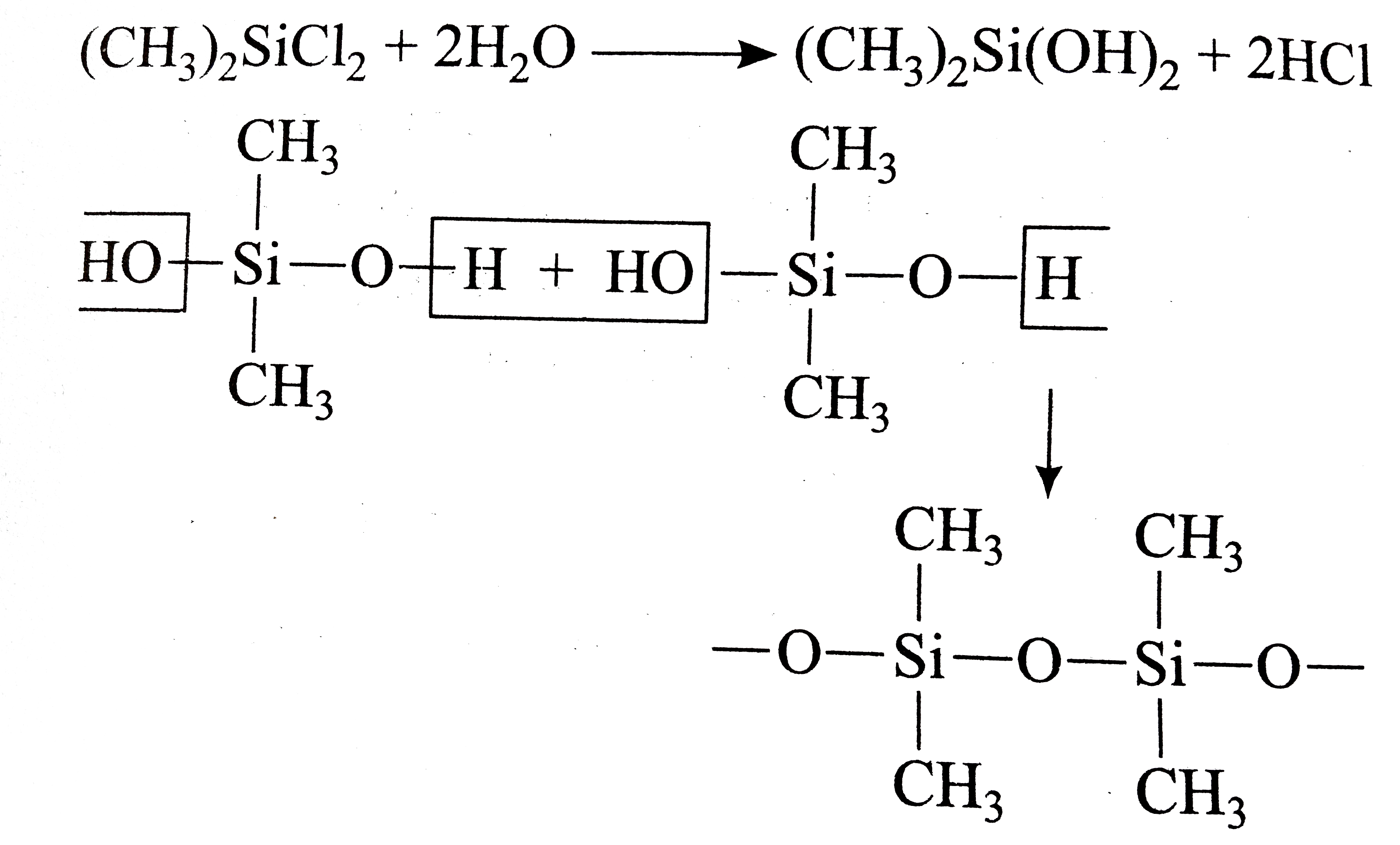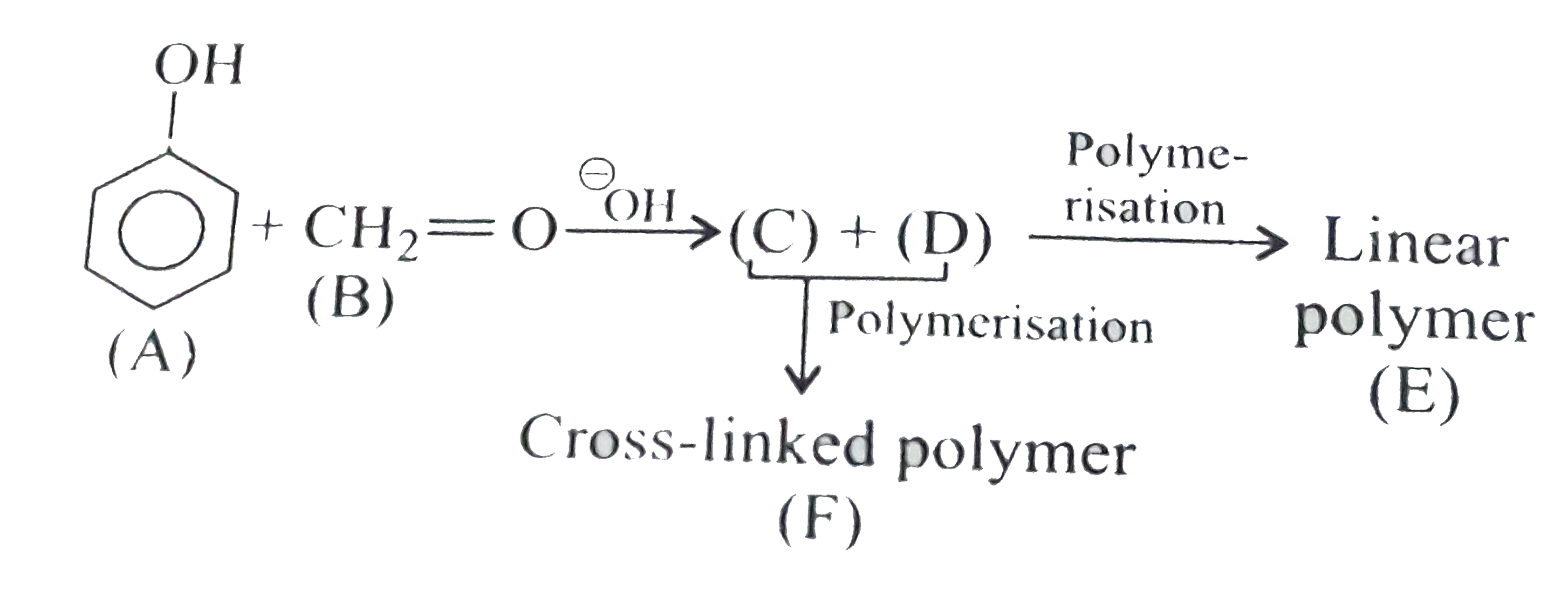The straight chain polymer is formed by
A
hydrolysis of CH3SiCl3 followed by condensation polymerisation
B
hydrolysis of (CH3)4 Si by addition Polymerisation
C
hydrolysis of (CH3)2SiCl2 followed by condensation polymerisation
D
hydrolysis of (CH3)3SiCl followed by condensation polymerisation
Video Solution
Text Solution
The correct Answer is:C
The hydrolysis of dimethylchlorosilane, (CH3)2SiCl2 yields (CH3)2Si(OH)2 which undergoes condensation polymerization to yeild a straight chain Polymer:

|
Topper's Solved these Questions
Similar Questions
Knowledge Check
A polymer is formed by :
AhydrationBmethylationChydrolysisDsehydration synthesisThe straight chain polymer (silicones) is formed by
Ahydrolysis of CH3SiCl3, followed by condensation polymerisation.Bhydrolysis of (CH3)4,Si by addition polymerisation.Chydrolysis of (CH3)2,SiCl2, followed by condensation polymerisationDhydrolysis of (CH3)3SiCl followed by condensation polymerisation.On monochlorination of pentane, the number of straight chain isomers formed is
A4B3C2D1

The linear polymer(E)is formed is:
View SolutionAmong the following, the branched chain polymer is
View SolutionHydrolysis of dimethyldichloro silane , (CH3)2SiCl2 followed by condensation polymerisation yields straight chain polymer of
View SolutionCellulose is a straight-chain polysaccharide composed of only:
View SolutionAs compared to boiling points of straight chain isomers, the boiling points of branched chain alkanes are
View Solution
